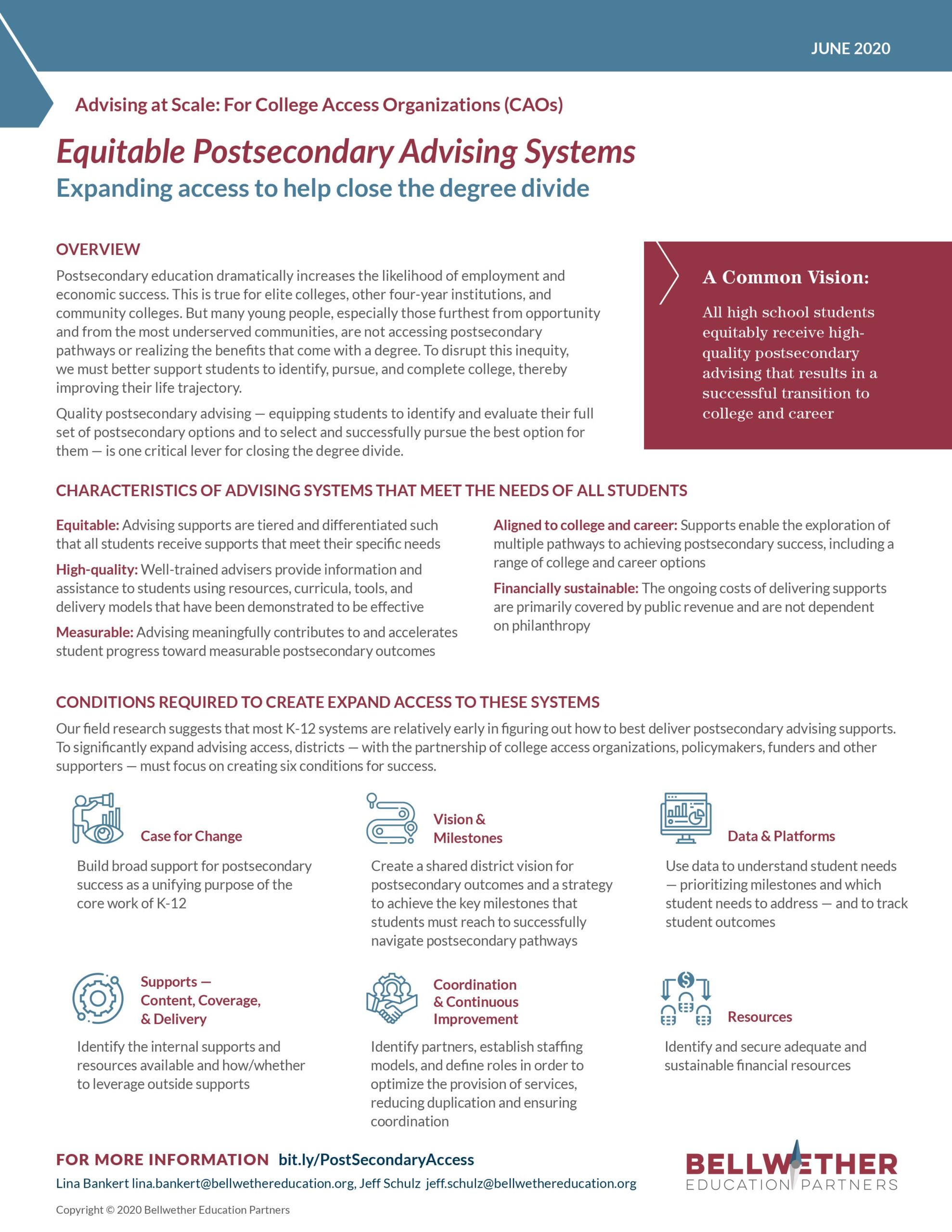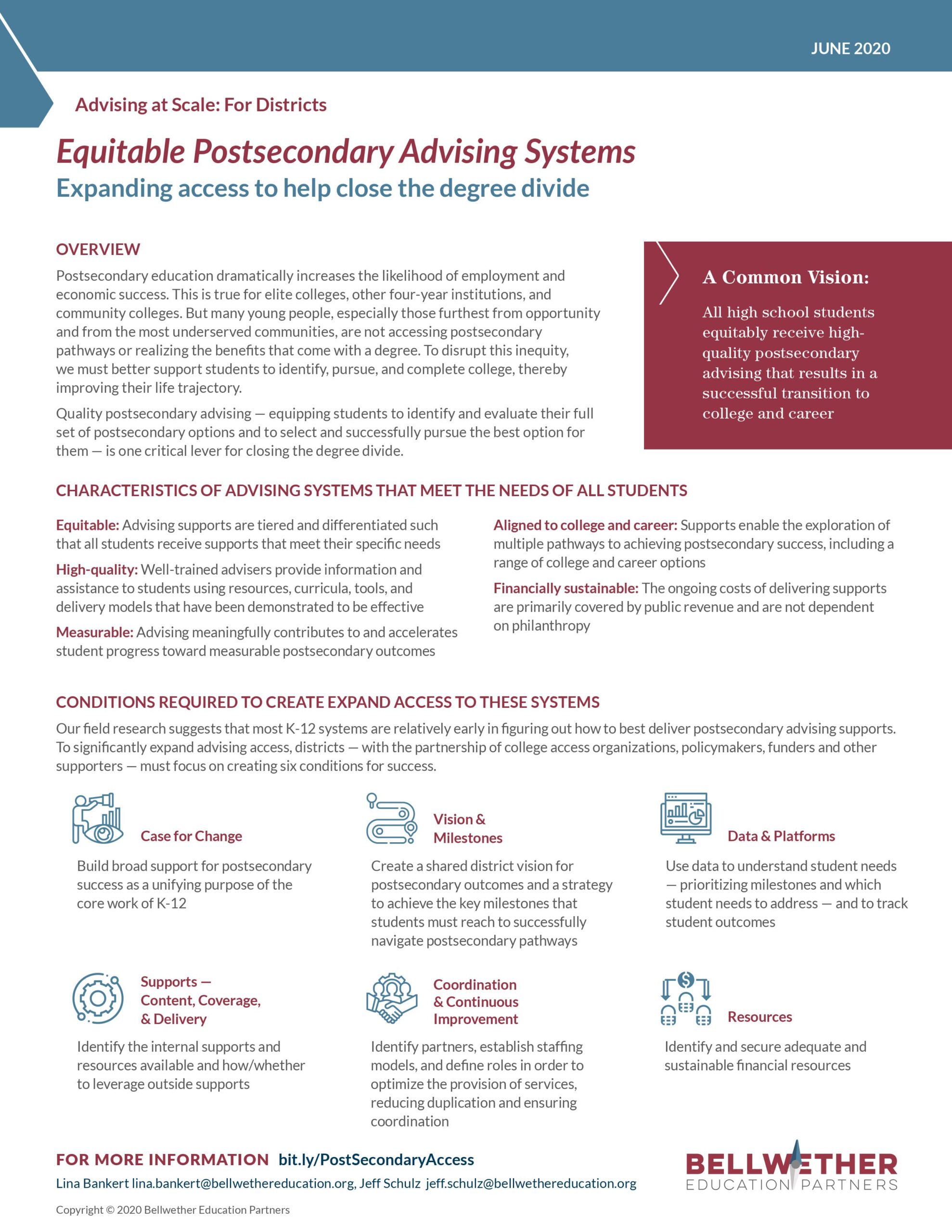Postsecondary education dramatically increases the likelihood of employment and economic success. But many young people, especially those furthest from opportunity and from underserved communities, are not accessing postsecondary pathways or realizing the benefits that come with a degree. To disrupt this inequity, we must better support students to identify, pursue, and complete college.
Postsecondary advising is just one lever for closing the degree divide, but it has only recently emerged as a priority and expectation of K-12 systems. As a result, few school districts provide systemic, equitable, and high-quality advising to meet the needs of all students, especially those furthest from opportunity.
Our latest report, “Postsecondary Advising: Characteristics and Conditions for Expanding Access” summarizes existing efforts and best practices in the college advising space. Informed by more than 60 discussions with districts, college access organizations (CAOs), and funders, this comprehensive slide deck outlines conditions that must be in place to expand college advising services. The deck also spotlights local efforts in Washington, DC, Atlanta, GA, and elsewhere.
In addition to the full deck, we have three short tipsheets offering concrete recommendations to college access organizations (CAOs), districts, and funders:
Download the publication here or read it in the viewer below.

